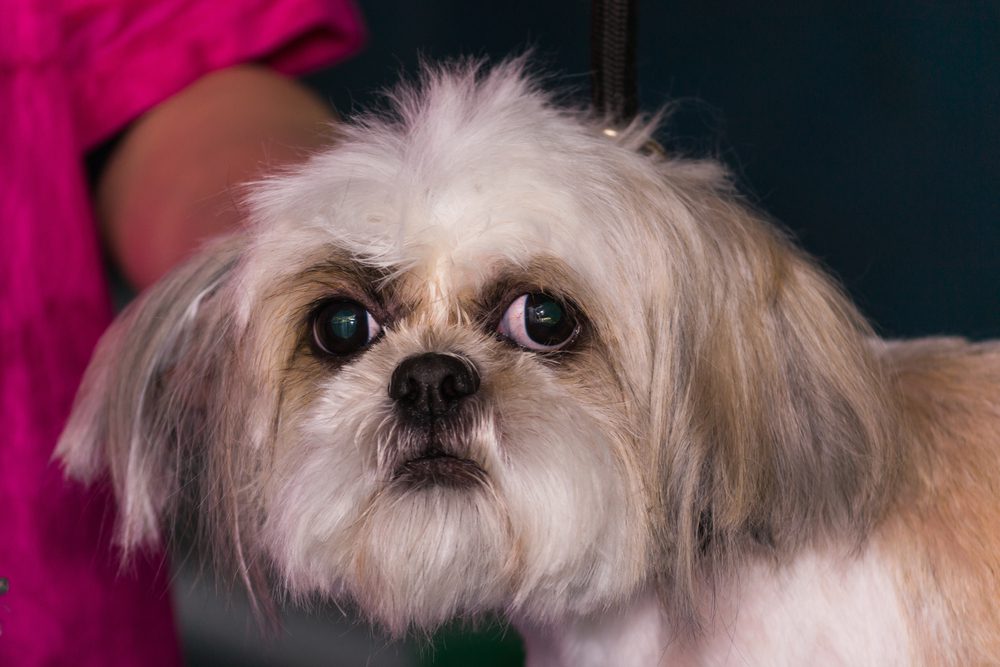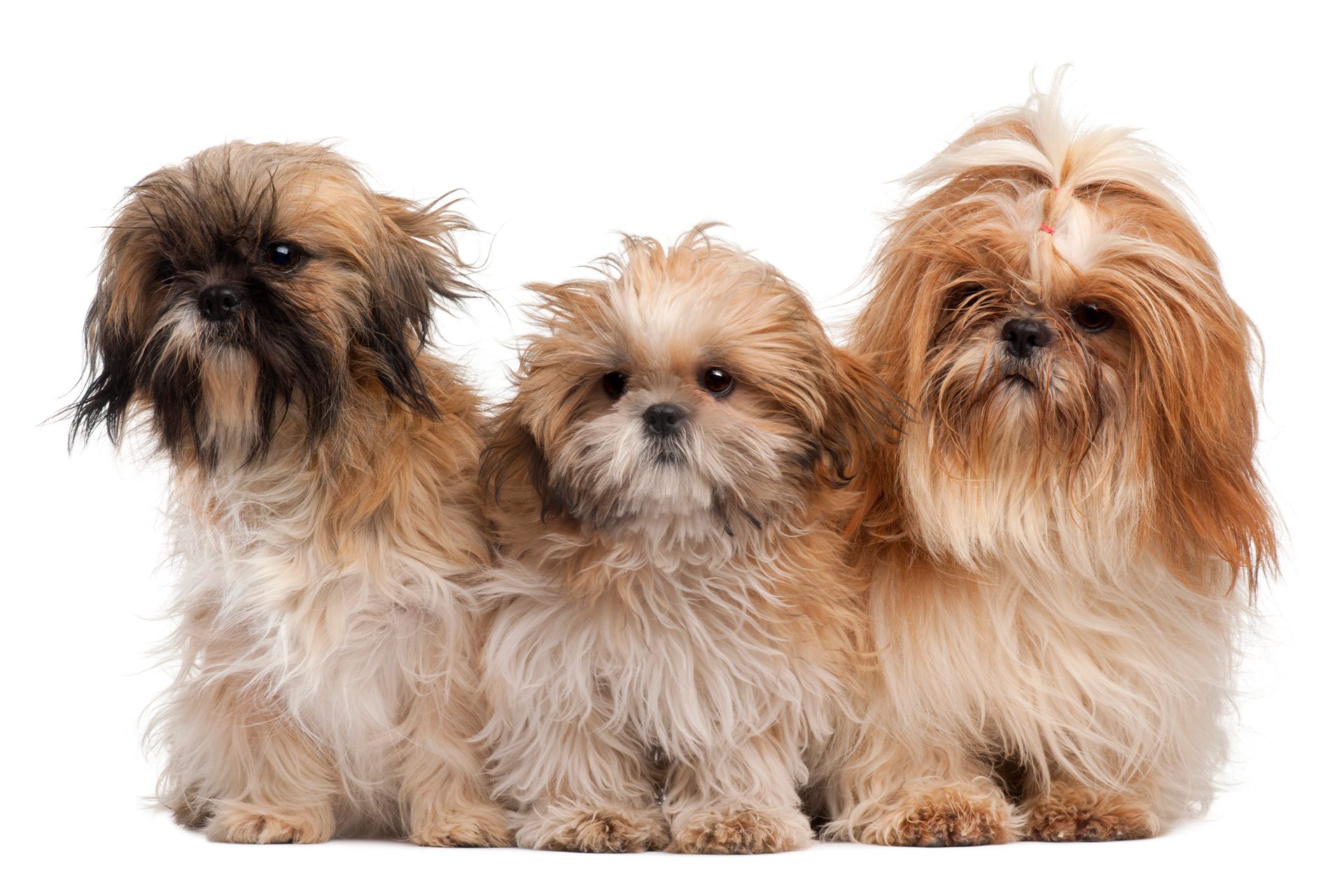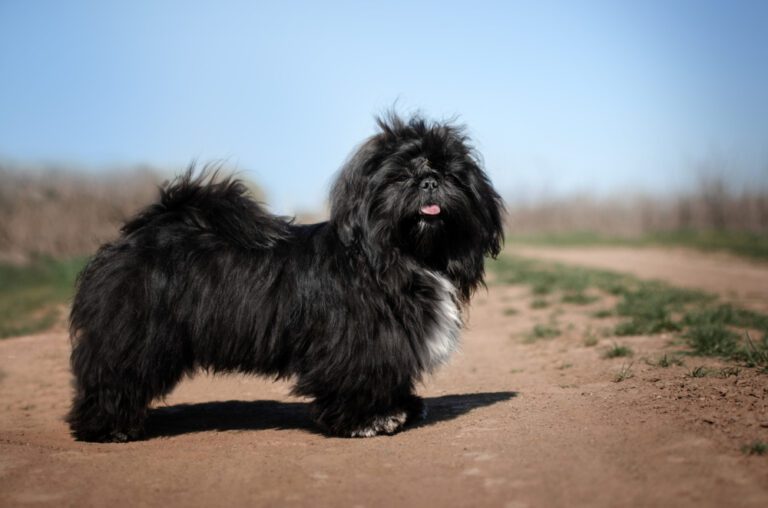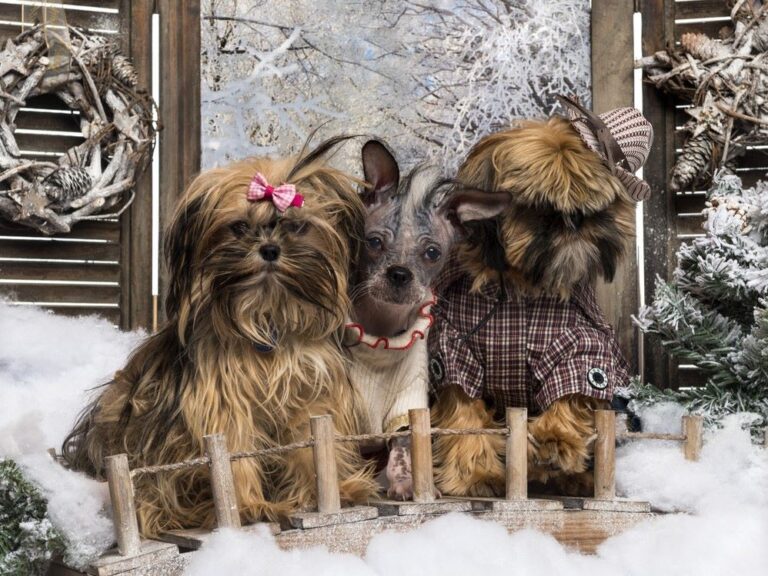How Many Puppies Can A Shih Tzu Have: Complete Guide
Are you thinking about breeding your Shih Tzu, or want to know more about the breed’s reproduction and litter sizes? Either way, you’ve come to the right place!
When it comes to puppies, everyone wants to know how many they can have. The Shih Tzu is a popular dog breed, and many people are curious about how many puppies can a Shih Tzu have in one litter.
This article will answer all your questions about Shih Tzu pregnancies! We will discuss everything from how long the pregnancy lasts to what complications you may experience. We will also explore the dangers of having too many puppies and what special care you should provide during your Shih Tzu pregnancy. So, without further ado, let’s get started!
How do I know that My Shih Tzu is Pregnant?
Many pet owners are unsure whether their Shih Tzu is pregnant. While several signs may indicate pregnancy, the only way to be sure is to take your dog to the vet for a check-up. However, there are some things you can look for at home that may give you a good idea as to whether or not your Shih Tzu is pregnant:
1. Changes in behavior
Your Shih Tzu may become more affectionate or demanding of attention during pregnancy.
2. Changes in appetite
Your Shih Tzu may have a decrease or increase in appetite during pregnancy.
3. Changes in weight
You may notice that your Shih Tzu is gaining weight due to the growing puppies.
4. Changes in the abdomen
As the puppies grow, you may notice a change in the size and shape of your Shih Tzu’s abdomen.
5. Changes in nipples
Your Shih Tzu’s nipples may become larger and darker in color as they prepare to lactate.
6. Nesting behavior
As the due date approaches, your Shih Tzu may exhibit nesting behavior, such as trying to find a secluded spot to deliver the puppies.
If you suspect that your Shih Tzu is pregnant, it’s important to consult with a veterinarian as soon as possible. Your veterinarian can confirm the pregnancy and provide guidance on how to care for your Shih Tzu during pregnancy and delivery.
How Long is a Shih Tzu Pregnancy?
Pregnancy in Shih Tzus is divided into three stages:
-
The first stage, called proestrus, can last anywhere from nine to seventeen days and is characterized by a swollen vulva and bloody vaginal discharge. During this time, the dog may exhibit more aggressive behavior as she comes into heat.
-
The second stage, estrus, is when she is most fertile and typically lasts for about nine days. During this time, her vulva will return to its normal size and her discharge will lighten in color.
-
Finally, the third stage, called diestrus, occurs after the dog has been mated and lasts for approximately sixty-three days. This is when she will gain weight and her nipples will enlarge as her body prepares for nursing.
A Shih Tzu pregnancy typically lasts for 9 weeks or 63 days. However, it is not unusual for a pregnant Shih Tzu to experience some level of discomfort during the last few weeks of her pregnancy. During this time, she may exhibit signs of nesting behavior, such as nest-building and Puppy proofing her home.
The expectant mother will need extra care and attention. Her diet should be high in protein and calcium, and she should be given plenty of opportunities to rest. It is also important to keep an eye on her weight, as she may gain a few pounds during pregnancy.
How Many Puppies Can a Shih Tzu Have in One Litter?
The average litter size for a Shih Tzu is between three and four puppies, although it’s not uncommon for them to have larger litters of up to six or seven puppies. The actual number of puppies a Shih Tzu has can depend on various factors, including the age and health of the dam (mother), the size of the litter, and genetics.
It’s important to note that larger litters can increase the risk of complications for the dam, such as dystocia (difficulty giving birth) or an increased risk of infection. It’s also important to consider that caring for a large litter can be physically and emotionally demanding for the dam and the owner.
If you are considering breeding your Shih Tzu, it’s important to consult with a veterinarian or a canine reproduction specialist to discuss the risks and responsibilities involved. They can help you determine the appropriate size of the litter based on the health and well-being of the dam and the potential puppies.
How Many Puppies Can a Shih Tzu Have in One Year?
A healthy Shih Tzu can have up to three litters a year, each consisting of four to six puppies. However, it is essential not to overbreed your dog, which can lead to health problems. The best way to ensure a healthy pregnancy is to consult a veterinarian beforehand. They can provide a pregnancy guide and help you monitor your dog. Your Shih Tzu can enjoy a safe and healthy pregnancy with proper care.
How Many Puppies Can a Shih Tzu Have in a Lifetime?
If you’re thinking of adding a Shih Tzu to your family, you may wonder how many puppies they can have in their lifetime. While the answer may vary depending on the individual dog, the average Shih Tzu can have between two and four litters throughout its lifetime.
However, it’s important to note that not all Shih Tzus can have this many puppies for health reasons. Suppose you’re considering breeding your Shih Tzu. In that case, it’s essential to consult with a veterinarian beforehand to ensure it’s a safe and healthy decision for both the dam and the sire. With proper care, your Shih Tzu can enjoy a long and happy life with their new litter mates.
Pregnancy Complications in Shih Tzus
Like all breeds, Shih Tzus can experience pregnancy complications. Some common pregnancy complications in Shih Tzus include:
1. Eclampsia
Also known as hypocalcemia or milk fever, eclampsia is a condition that occurs when the dam (mother) doesn’t have enough calcium in her body. Symptoms include weakness, tremors, and seizures. Eclampsia can be life-threatening if left untreated.
2. False Pregnancy
False pregnancy, or pseudocyesis, is a condition that can occur in dogs that have not been spayed. It is characterized by developing all the signs of pregnancy without being pregnant. False pregnancy is thought to be caused by a hormonal imbalance and can be treated with medication.
3. Dystocia
Dystocia, or difficulty giving birth, can occur due to various factors, including a large litter size, abnormalities of the uterus or cervix, or the dam’s pelvis being too small. Symptoms of dystocia include prolonged labor, contractions without progress, and distress in the dam.
3. Mastitis
Mastitis is a condition that affects the mammary glands and is characterized by inflammation and pain. It is more common in dogs that are nursing puppies but can also occur in those that are not pregnant or nursing. Mastitis is usually caused by bacteria entering the mammary gland through cracks in the nipple. Treatment typically involves antibiotics and pain relief.
4. Preterm labor
Preterm labor is when labor begins before the 37th week of pregnancy. Preterm labor can occur for various reasons and can lead to premature delivery.
5. Puppy Mortality Syndrome
Puppy mortality syndrome (PMS) is a condition that affects newborn puppies and is characterized by weakness, lethargy, and low body temperature. PMS is thought to be caused by inadequate maternal care or poor nutrition during pregnancy and often leads to death within the first week of life. There is no treatment for PMS, but affected puppies should be provided with supportive care, such as warmth and supplemental feedings.
Shih Tzu Delivery: Natural Birth or C-Section?
Natural Births in Shih Tzus
While not as common as c-sections, natural births occur in Shih Tzus. In most cases, natural births will go smoothly and without incident. However, some risks are associated with natural deliveries, such as the dam being unable to deliver all of the puppies or being born too large for the dam to push out.
Risks of Natural Births
As with c-sections, there are some risks associated with natural births. These risks include uterine rupture, prolapse, and perineal tearing. Additionally, natural births can sometimes be complicated because the dam may not be able to deliver all of the puppies, or the puppies may be born too large for her to push out.
C-Sections in Shih Tzus
C-sections are a standard surgical procedure performed on dogs, and Shih Tzus are no exception. While some risks are associated with any surgery, c-sections are generally considered safe and often performed when the dam cannot deliver the puppies naturally.
Risks of C-Sections
While c-sections are generally considered safe, some risks are associated with the procedure. These risks include infection, bleeding, and blood clots. Additionally, c-sections can sometimes be complicated because the dam may not produce enough milk for her puppies, or she may have difficulty bonding with them.
How to Choose Between C-Section and Natural Birth
When deciding whether to opt for a c-section or a natural birth, there are a few things to consider. First, it is essential to consult with your veterinarian to get their professional opinion on which option would be best for your dog. Additionally, you must consider your dog’s health history and any potential complications from either type of delivery. Finally, it is also important to consider your own personal preferences and comfort level with either option.
Dangers Associated With Having Too Many Shih Tzu Puppies
Shih Tzus are a popular dog breed known for their playful personalities and luxurious coats. However, potential owners should know the dangers of having too many Shih Tzu puppies. While a healthy adult Shih Tzu can have up to eight puppies at a time, this number can be risky for both the mother and the litter. Pregnancy and childbirth are strenuous activities, and too many puppies can put undue stress on the mother’s health.
In addition, a large litter is more likely to experience complications during birth, which can risk the lives of all the puppies. For these reasons, it is essential to consult a veterinarian or breeder before planning to have a litter of Shih Tzu puppies. By doing so, you can help ensure that both the mother and her litter are healthy and happy.
Special Care During Shih Tzu Pregnancy
Here are a few tips for providing special care during your Shih Tzu’s pregnancy:
1. Consult with a veterinarian
It’s important to consult with a veterinarian when you suspect your Shih Tzu is pregnant. Your veterinarian can confirm the pregnancy, provide guidance on nutrition and exercise, and monitor the pregnancy to ensure it usually progresses.
2. Provide a balanced diet
Feeding your pregnant Shih Tzu a high-quality, balanced diet that meets her increased nutritional needs is essential. Consult your veterinarian or a canine nutritionist to determine the right food to feed your pregnant Shih Tzu.
3. Provide appropriate exercise
Pregnant Shih Tzus should have moderate exercise to help maintain muscle tone and overall health. Avoid strenuous exercise and activities that could potentially cause harm to the puppies.
4. Protect against parasites
Pregnant Shih Tzus are more susceptible to parasites like fleas and worms. Using parasite preventatives is crucial to protect your pregnant Shih Tzu and her unborn puppies.
5. Provide a safe and comfortable environment
Pregnant Shih Tzus will need a safe, comfortable place to deliver their puppies. It’s essential to provide a clean, quiet, and warm area for the dam to give birth.
6. Grooming
Your Shih Tzu’s coat will become thicker and more lustrous during pregnancy. Be sure to brush her regularly and keep her nails trimmed.
7. Provide a comfortable nesting area
As your Shih Tzu’s due date approaches, she may start to exhibit nesting instincts, such as shredding newspapers or blankets for bedding material. Provide her with a comfortable nesting area where she can prepare for the birth of her puppies.
9. Birth Preparations
As your Shih Tzu’s due date approaches, you will need to gather some supplies for the birth, including clean towels, cotton balls, scissors, and a bulb syringe (for suctioning fluids from the puppies’ mouths and noses). You will also need someone to help you with the delivery if required.
10. Delivery
The average litter size for a Shih Tzu is three to four puppies, but litters of up to eight puppies are not uncommon. The delivery process usually takes two to four hours from start to finish. Once the first puppy is born, subsequent puppies typically follow within 15-20 minutes intervals.
11. After the Birth
Once the delivery is complete, monitoring your Shih Tzu and her puppies closely for any signs of problems (e.g., bleeding, difficulty breathing) is crucial. If everything appears normal, allow your Shih Tzu to bond with her puppies and provide them with plenty of food and water.
Where Should My Shih Tzu Deliver?
When it comes time for your Shih Tzu to have puppies, you may wonder where the best place for her to deliver is. If you have a small home, you may need more space to set up a whelping box or another designated area. And if you have other pets, you may be concerned about them disturbing the birthing process. Here are a few things to consider when making your decision:
-
How many puppies can a Shih Tzu have? Litters typically range from one to four puppies, but larger litters are possible. If your dog is expected to have a large litter, she may be more comfortable delivering in a larger space.
-
What is the Shih Tzu pregnancy guide? This will give you an idea of how long your dog’s gestation period is and when she is likely to go into labor. This can help you plan ahead and make sure that you have everything ready for her delivery.
-
What are your other pets like? If you have other dogs, they may be curious about the birthing process and want to investigate. In some cases, this can lead to problems. If you have cats, they may be more likely to stay away from the area. Either way, it’s important to make sure that all of your pets are safe and cannot disturb your Shih Tzu while she is delivering her puppies.
Deciding where your Shih Tzu should deliver her puppies is an important one. Take the time to consider all the factors involved to make the best choice for your dog and her litter.
Shih Tzu Litter Compared to Other Breeds
-
Alaskan Malamute: 6-8 puppies
-
Beagle: 4-6 puppies
-
Bichon Frise: 5-7 puppies
-
Boston Terrier: 3-5 puppies
-
Bulldog: 6-8 puppies
-
Cocker Spaniel: 6–8 puppies
-
Dachshund: 1–4 puppies
-
Dalmatian: 9–12 puppies
-
English Springer Spaniel: 4–8 puppies
-
Finnish Lapphund: 2–4 puppies
-
German Shephard: 6–10 Puppies
-
Golden Retriever: 8–10 Puppies
-
Labrador Retriever: 10 – 12 Puppies
-
Poodle (Miniature): 4 – 7 Puppies
-
Poodle (Standard): 8 – 11 Puppies
-
Pug: 3 – 5 Puppies
-
Rottweiler: 8 – 12 Puppies
-
Siberian Husky: 6 – 11 Puppies
-
Yorkshire Terrier: 3 – 7 Puppies
-
Shih Tzu: 1–4 puppies
As you can see, the average litter size for a Shih Tzu is much smaller than other breeds. This is due to their small size and the fact that they are a brachycephalic breed.
Why Do Brachycephaly Breeds Have Smaller Litters?

Brachycephalic dogs, or those with shortened skulls and muzzles, have become increasingly popular in recent years. However, breeders of these dogs often face a challenge regarding litter size. Why do brachycephalic breeds have smaller litters?
One of the main reasons why brachycephalic breeds have a smaller litter is due to the shape of their skull. The shortened snout means less room for puppies to develop, so litters are usually smaller. It can be seen in breeds like Shih Tzus, which typically have four or fewer puppies.
Additionally, the shortened snout can cause birthing difficulties, so many brachycephalic breeds are delivered by cesarean section. It is another reason why these breeds tend to have smaller litter. Overall, the skull shape of brachycephalic breeds limits the size of their litter, which is one of the main reasons these breeds have smaller families.
When planning a breeding program for a brachycephalic breed, breeders should consider the likelihood of smaller litter sizes. They may need to increase the number of breeding stock animals to ensure that they produce enough puppies to meet demand. Breeding programs for brachycephaly breeds can be successful, but it is essential to be aware of these programs’ challenges.
Conclusion
Shih Tzus are small toy breeds that can have a decent number of puppies in a single litter, with an average litter size of three to four puppies. However, the actual number of puppies depends on various factors, including the dam’s age and health, the litter’s size, and genetics. While larger litters can increase the risk of complications for the dam and the puppies, it’s essential to consider the long-term health and well-being of the dam and the potential puppies when deciding how often to breed a Shih Tzu. If you are considering breeding your Shih Tzu, it’s important to consult with a veterinarian or a canine reproduction specialist to discuss the risks and responsibilities involved.







